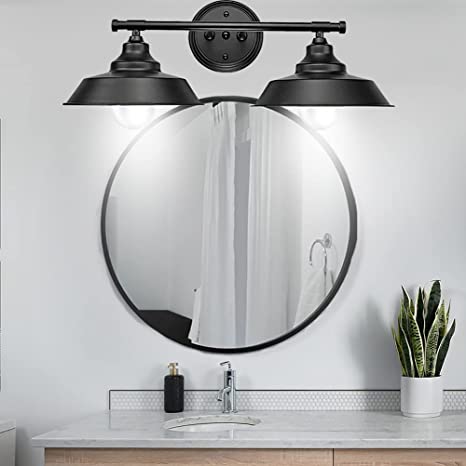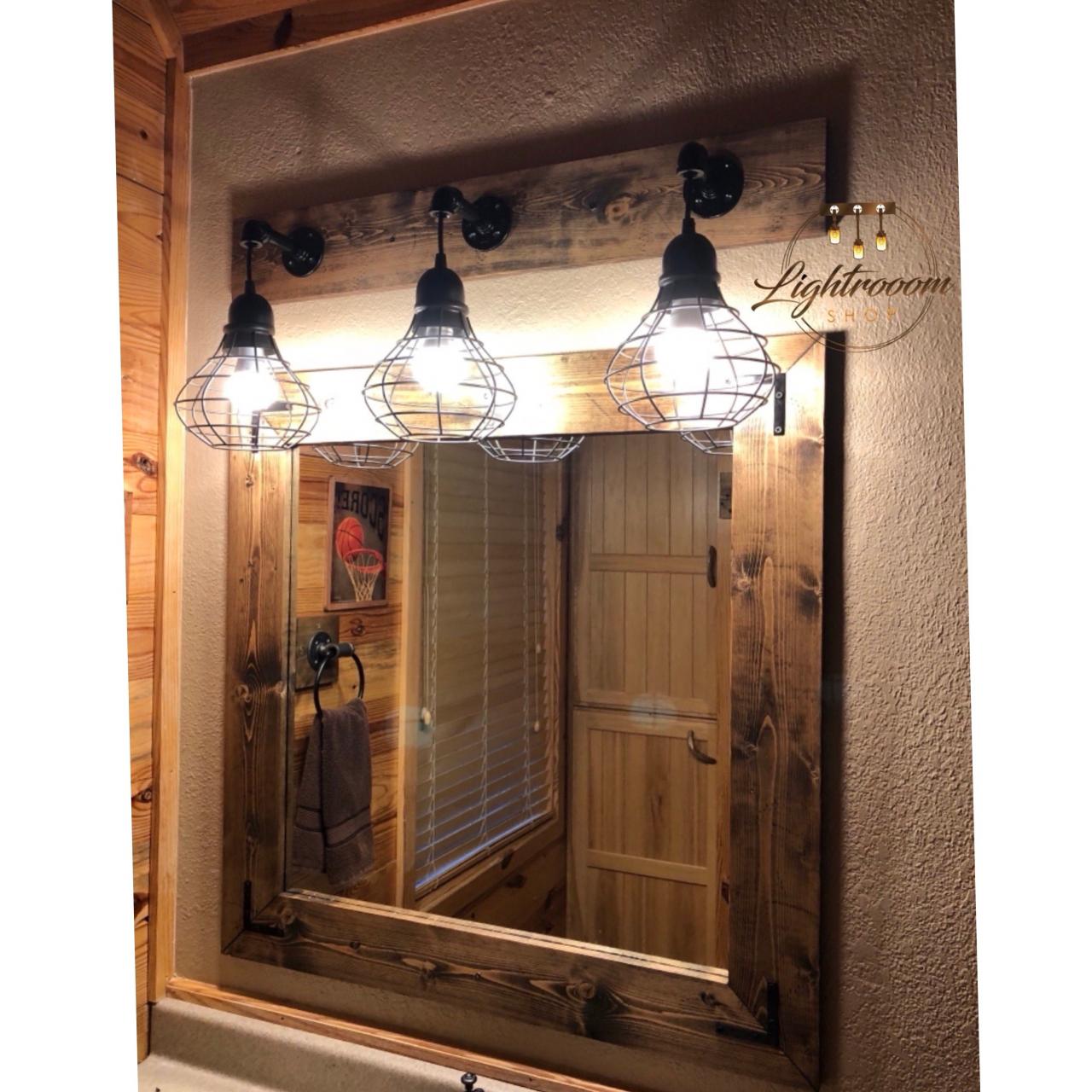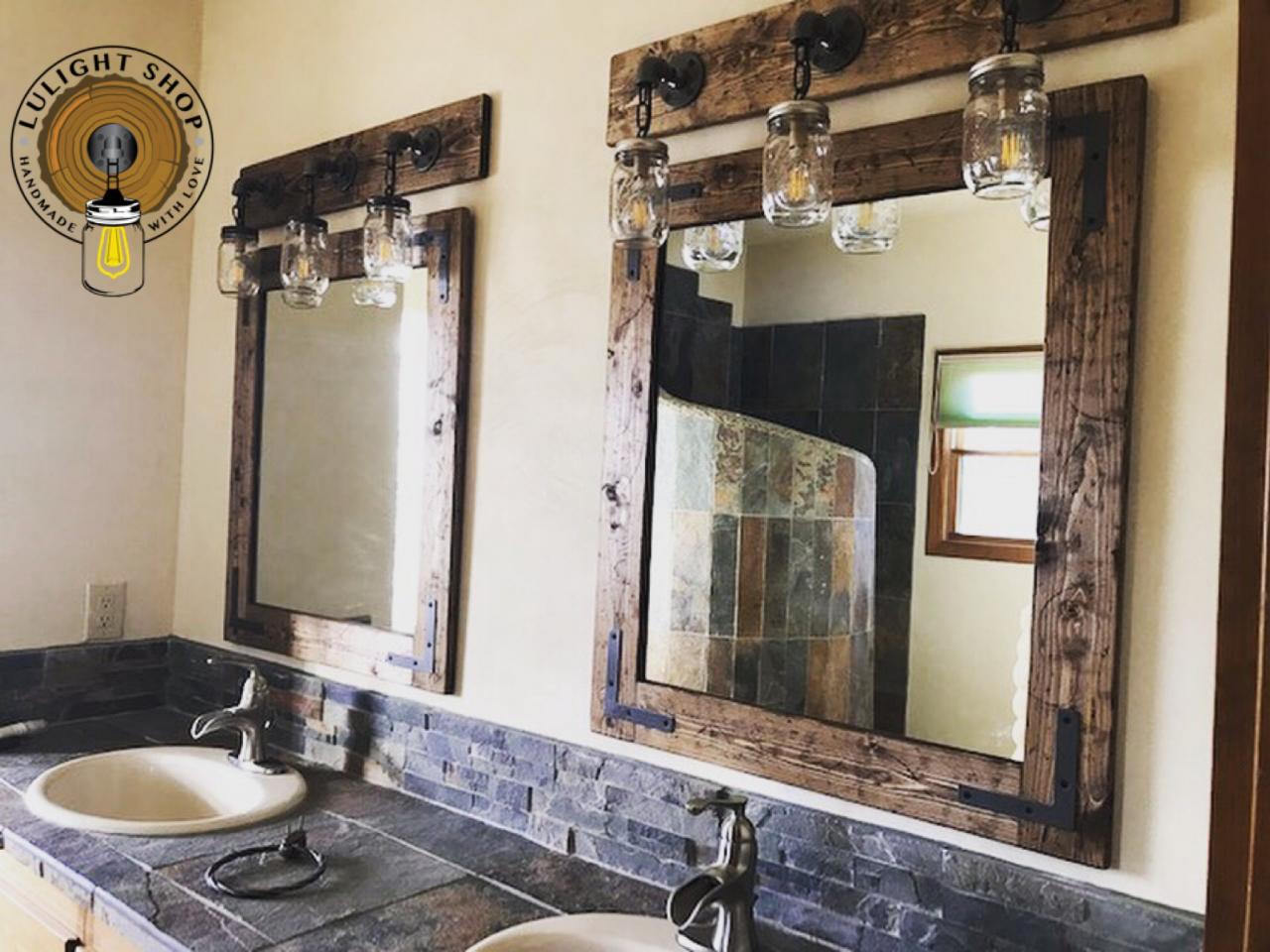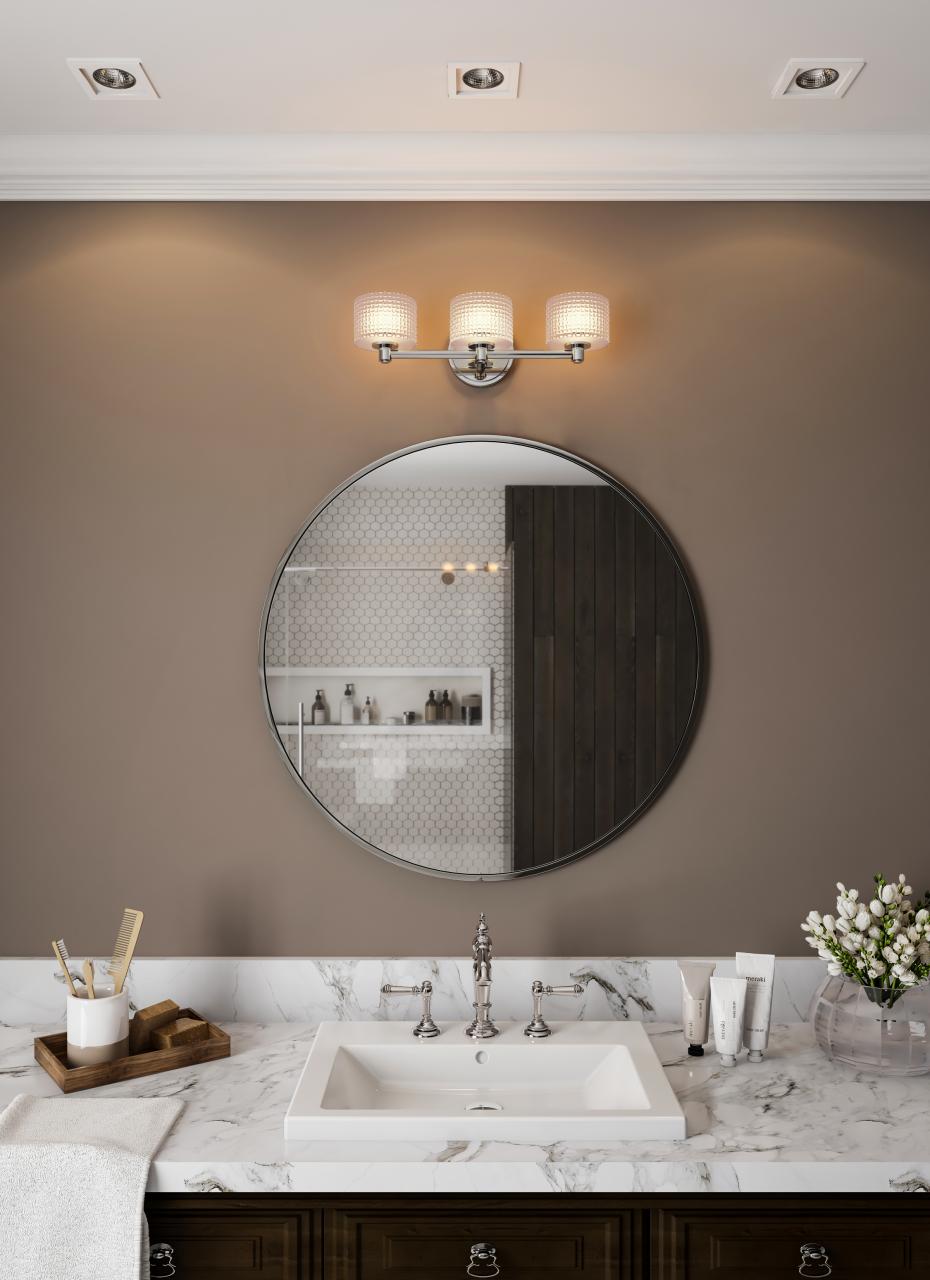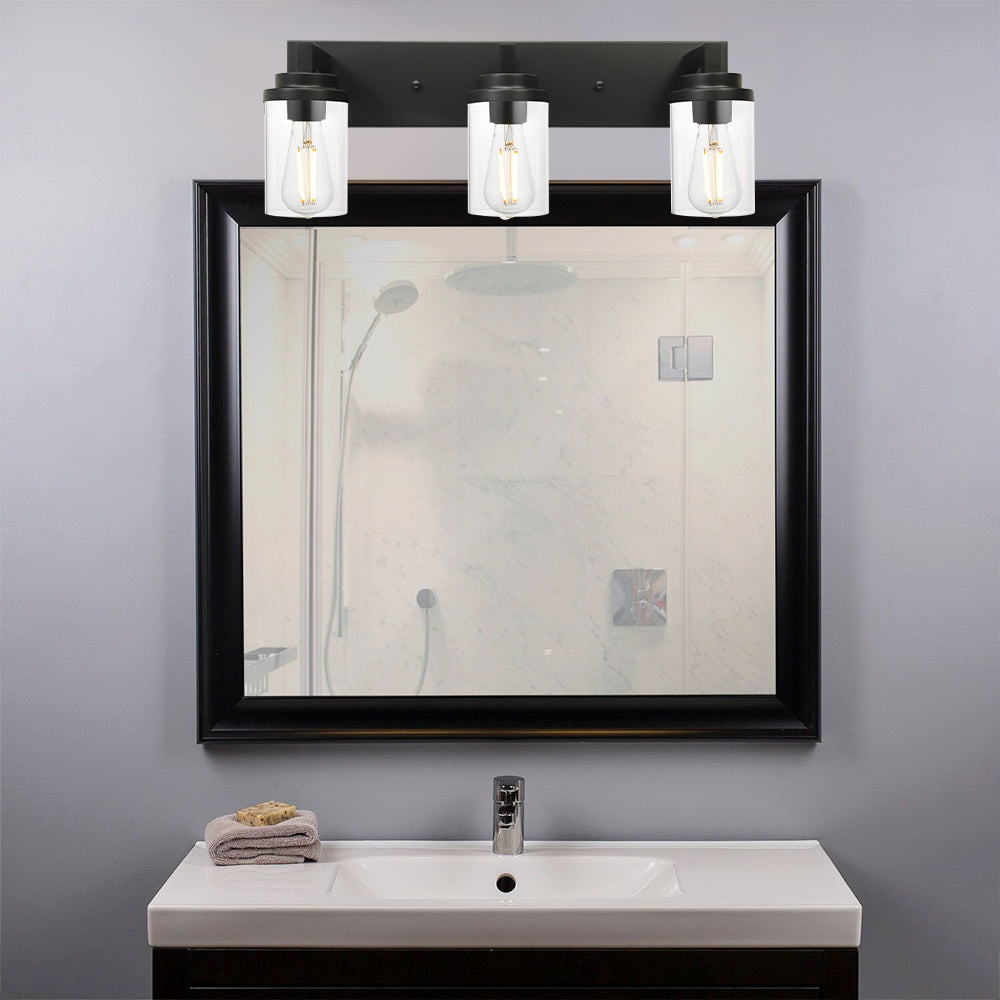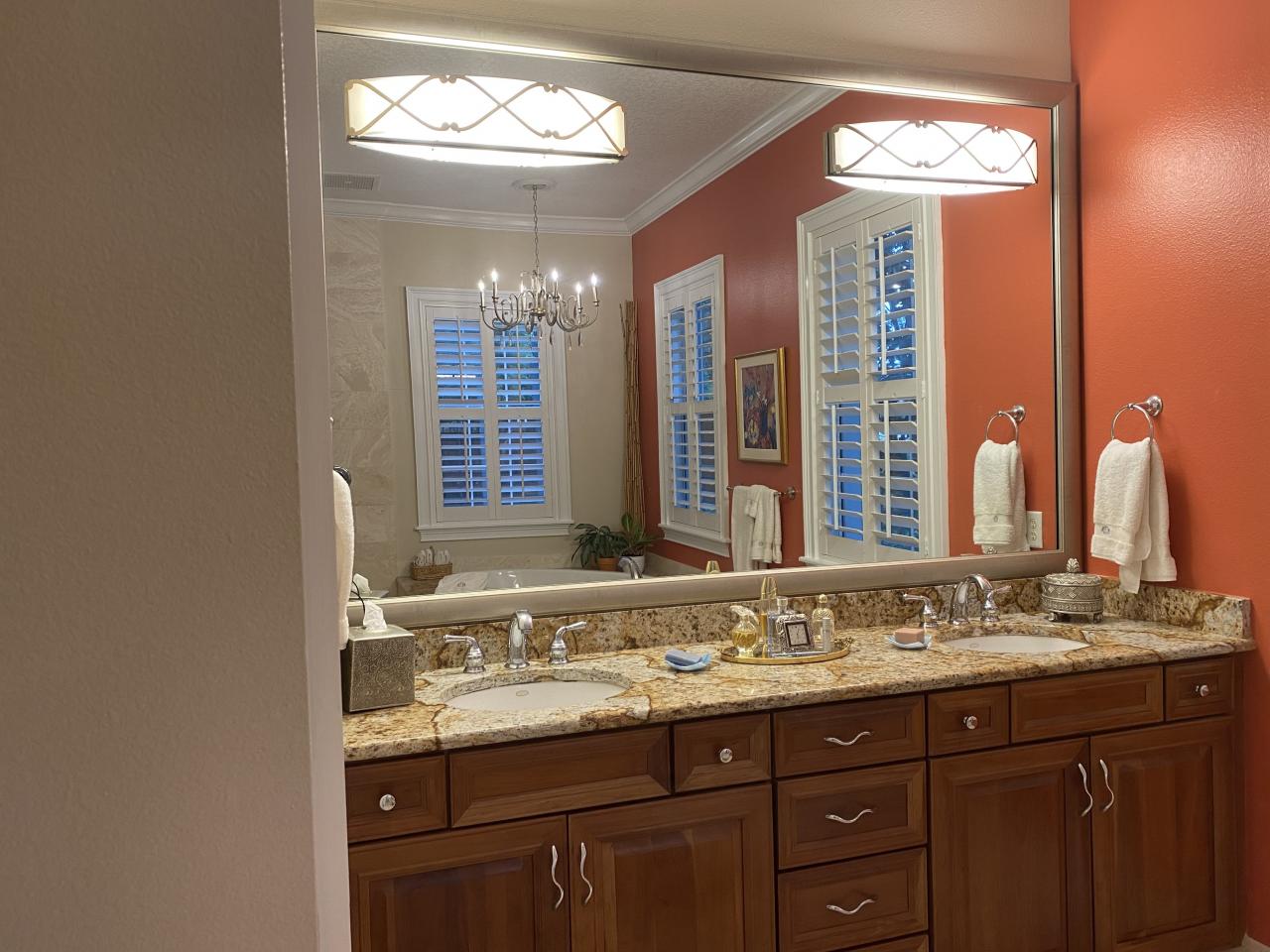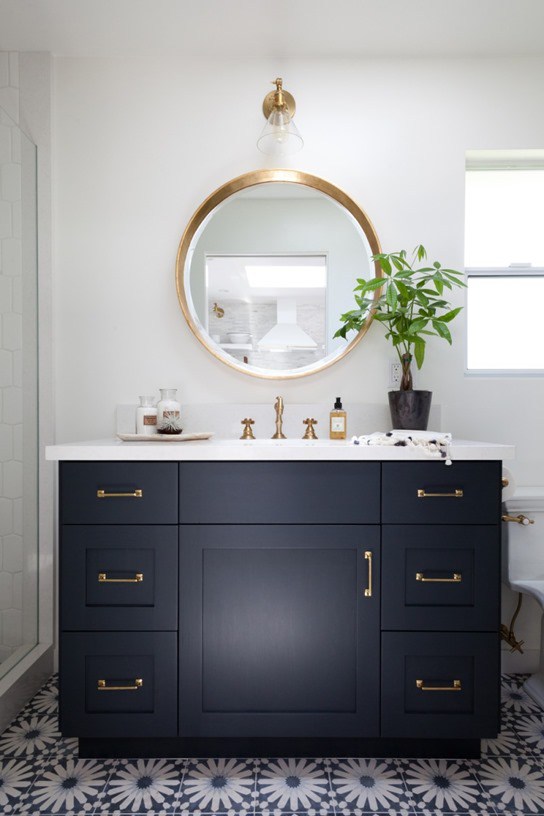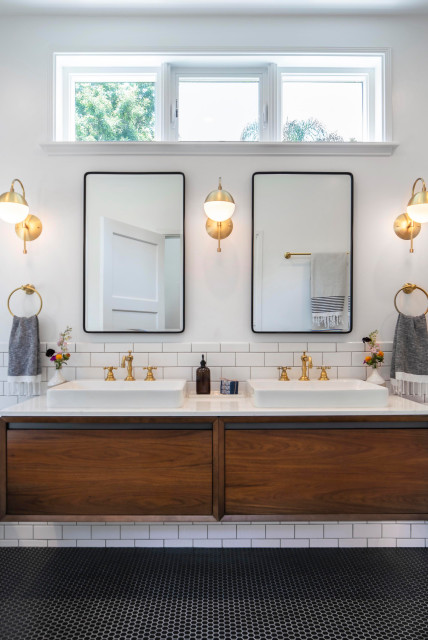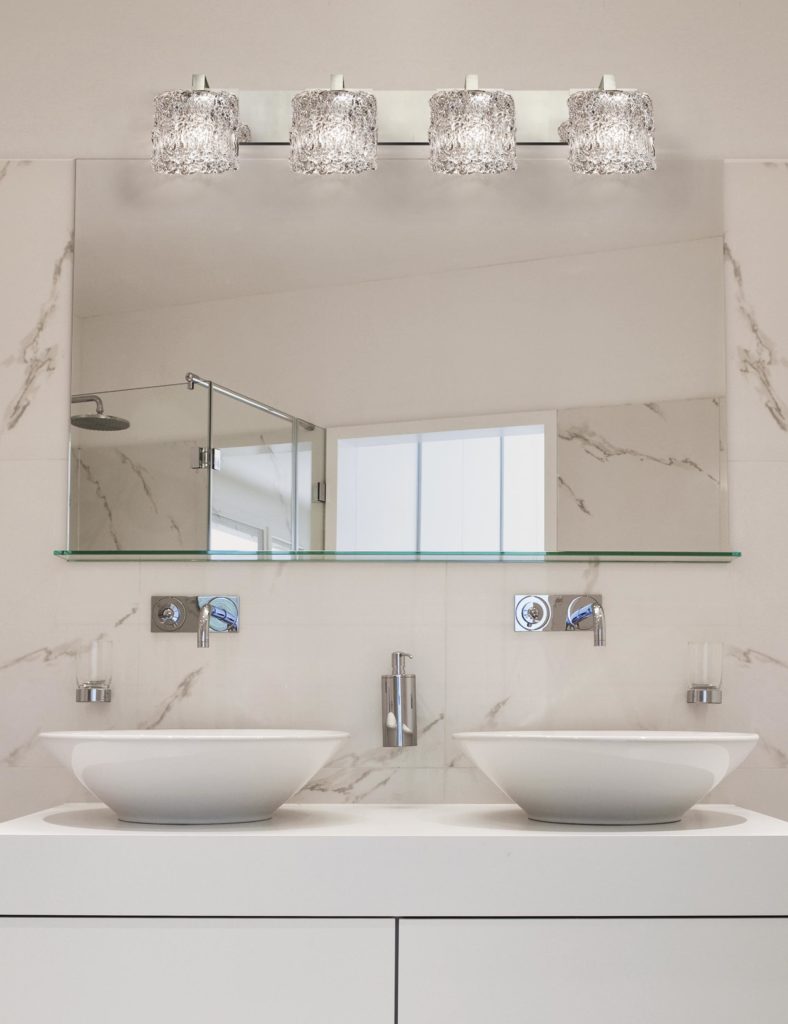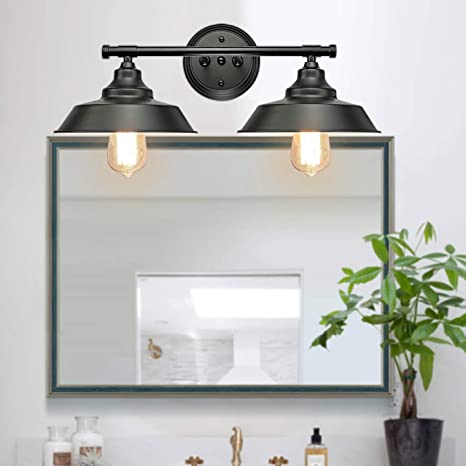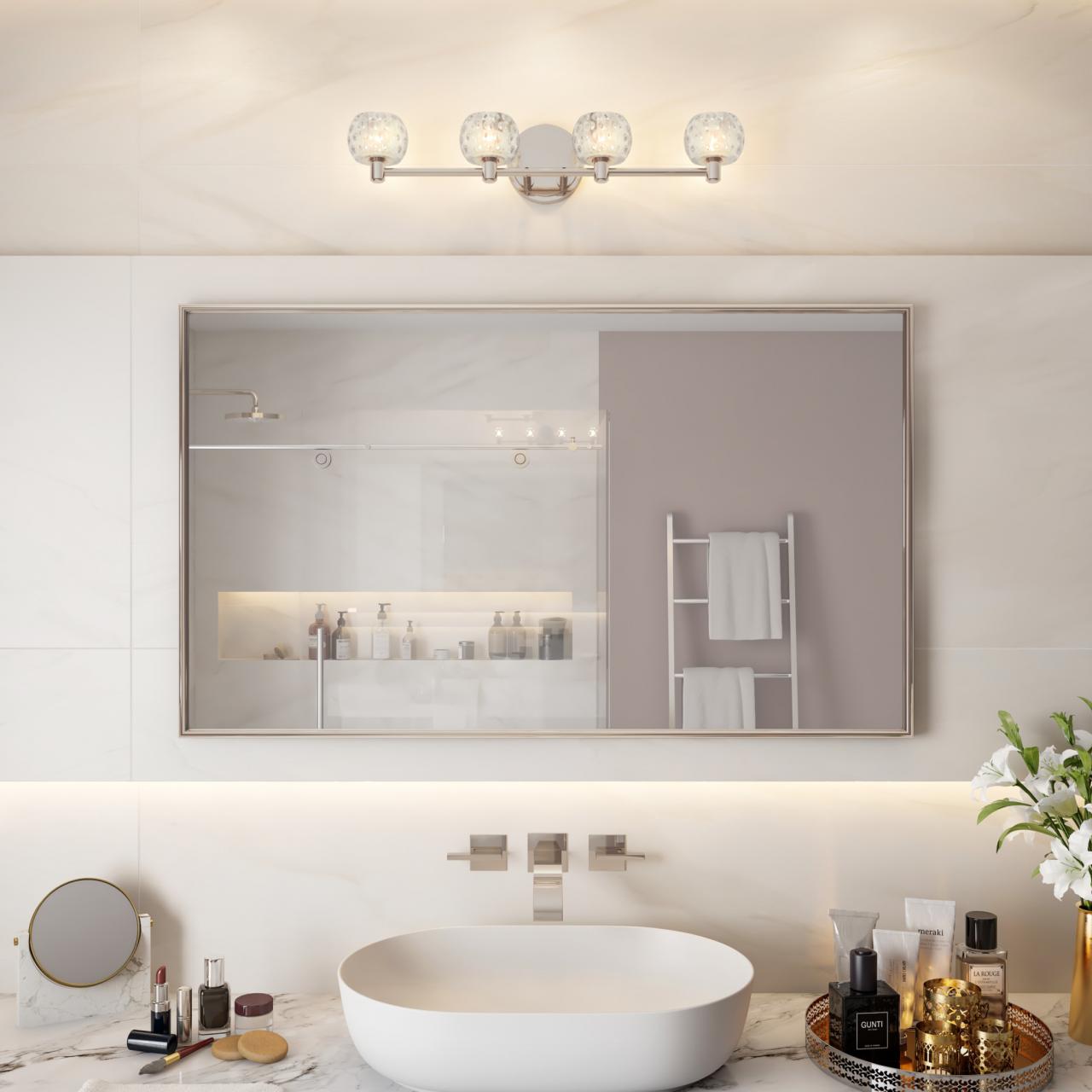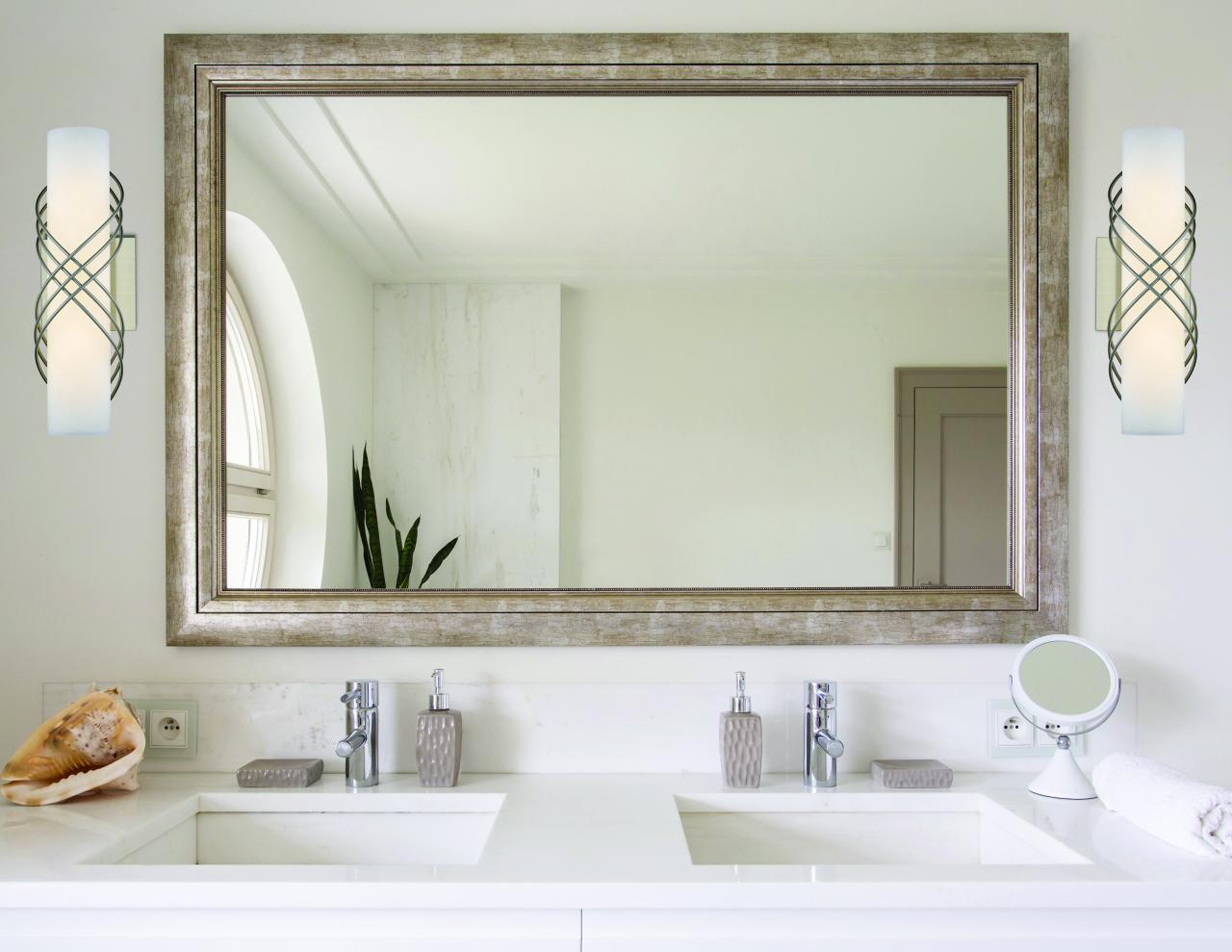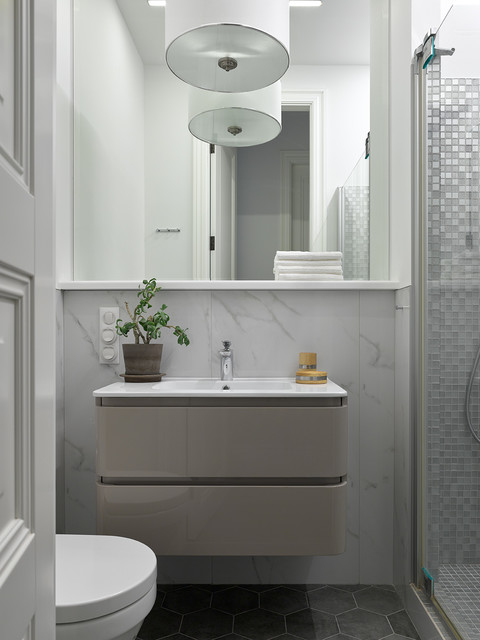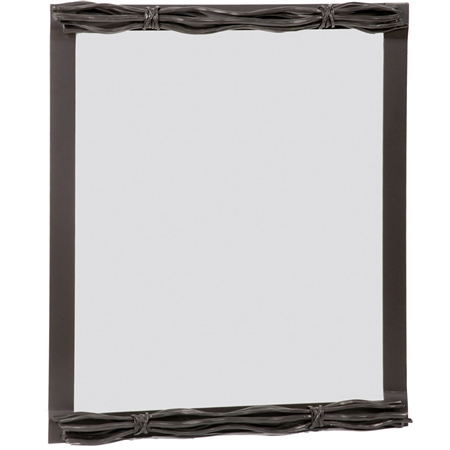Choosing the right bathroom mirror fixtures can transform the look and functionality of your bathroom. From types of mirrors to installation tips, this guide covers everything you need to know.
Types of Bathroom Mirrors
- Vanity Mirrors: Vanity mirrors are the most common type of bathroom mirror, typically installed above the sink. They come in various shapes and sizes, including rectangular, oval, and round. I find that a well-chosen vanity mirror can be the centerpiece of the bathroom, enhancing both style and functionality.
- Lighted Mirrors: Lighted mirrors come with built-in lighting, often LED, which provides excellent illumination for tasks like shaving or applying makeup. These mirrors can be backlit or feature integrated lights around the edges. I love how lighted mirrors eliminate shadows, providing a clear, bright reflection.
- Magnifying Mirrors: Magnifying mirrors are great for detailed grooming tasks, offering a close-up view of your face. They can be wall-mounted or freestanding and often come with adjustable arms for flexibility. In my experience, a magnifying mirror is indispensable for precision tasks like eyebrow plucking or makeup application.
- Frameless Mirrors: Frameless mirrors have a sleek, modern look that blends seamlessly with contemporary bathroom designs. Without a bulky frame, they create a clean and unobtrusive appearance. I’ve noticed that frameless mirrors can make a small bathroom feel larger and more open.
- Framed Mirrors: Framed mirrors come in a variety of styles, from ornate and traditional to sleek and modern. The frame can be made of wood, metal, or other materials, adding a decorative element to the mirror. I appreciate how framed mirrors can tie together the overall design theme of the bathroom.
- Medicine Cabinet Mirrors: Medicine cabinet mirrors combine storage and reflection in one unit. They are perfect for small bathrooms where space is at a premium. These mirrors often feature shelves or compartments behind the mirror for storing toiletries and medications. I find them to be a practical and space-saving solution.

Materials and Finishes
Glass
Glass is the most common material for bathroom mirrors, offering a clear and accurate reflection. High-quality glass mirrors have minimal distortion and provide a true representation of your appearance. I always recommend investing in a good-quality glass mirror for the best results.
Silver Coating
Silver coating is applied to the back of the glass to create a reflective surface. It’s the standard for most mirrors due to its excellent reflective properties. I’ve found that silver-coated mirrors offer bright, clear reflections that are essential for grooming tasks.
Copper-Free Coating
Copper-free coating is an eco-friendly alternative that provides better resistance to corrosion and oxidation. These mirrors are ideal for humid environments like bathrooms. I prefer copper-free mirrors for their durability and environmental benefits.
Acrylic
Acrylic mirrors are lightweight and shatter-resistant, making them a safe choice for bathrooms. While they may not offer the same clarity as glass, they are less likely to break and are easier to install. I’ve seen acrylic mirrors used effectively in children’s bathrooms for added safety.
Antique Finishes
Antique finishes, such as aged brass or bronze, add a vintage touch to bathroom mirrors. These finishes can give your bathroom a classic, timeless look. I love how antique-finished mirrors bring a sense of history and elegance to the space.
Black Matte Finishes
Black matte finishes are trendy and versatile, providing a sleek, modern look that can complement various design styles. They are easy to clean and maintain, resisting fingerprints and smudges. In my experience, black matte mirrors add a touch of sophistication and modernity to the bathroom.
Installation and Maintenance
Measuring for the Mirror
Before purchasing a mirror, measure the space where you plan to install it. Ensure that it fits proportionately with the vanity and other fixtures. I always double-check measurements to avoid buying a mirror that is too large or too small for the space.
Choosing the Right Height
The mirror should be positioned at a height that allows everyone in the household to use it comfortably. Generally, the center of the mirror should be at eye level for the average person. I’ve found that adjusting the height can significantly impact the usability of the mirror.
Securing the Mirror
Use appropriate wall anchors and screws to secure the mirror, especially if it is heavy. For larger mirrors, consider using a French cleat for added stability. In my experience, ensuring the mirror is securely mounted is crucial for safety and longevity.
Regular Cleaning
Clean the mirror regularly to maintain its clarity and shine. Use a soft, lint-free cloth and a mixture of water and vinegar or a glass cleaner. Avoid abrasive cleaners that can scratch the surface. I recommend wiping down the mirror weekly to keep it looking pristine.
Preventing Fog
Fog-free mirrors are available with built-in heating elements that prevent condensation. Alternatively, you can apply an anti-fog spray to the mirror’s surface. I’ve found these solutions to be very effective, especially in bathrooms with poor ventilation.
Addressing Damage
If the mirror gets chipped or cracked, consider replacing it to avoid safety hazards. For minor scratches, you can use a mirror repair kit. In my experience, keeping the mirror in good condition not only enhances its appearance but also ensures safe use.
Lighting Considerations
Natural Light
Natural light is ideal for bathrooms, providing the best illumination for grooming tasks. Position the mirror near a window if possible to take advantage of natural light. I find that natural light enhances the clarity and brightness of the reflection.
Task Lighting
Task lighting, such as sconces or LED strips around the mirror, provides focused illumination for activities like shaving or applying makeup. Choose lights that mimic natural daylight for the most accurate reflection. In my opinion, task lighting is essential for creating a well-lit and functional bathroom space.
Ambient Lighting
Ambient lighting sets the overall mood of the bathroom and should complement the task lighting around the mirror. Use dimmable overhead lights or wall-mounted fixtures to achieve the desired ambiance. I like to create a relaxing atmosphere with warm, soft lighting.
Accent Lighting
Accent lighting highlights architectural features or decorative elements in the bathroom. Use LED strips or small spotlights to accentuate the mirror and other fixtures. I’ve seen how accent lighting can add a layer of sophistication and depth to the bathroom design.
Color Temperature
Choose the right color temperature for your bathroom lighting. Warm white (2700K-3000K) creates a cozy, inviting atmosphere, while cool white (4000K-5000K) offers a bright, energizing environment. I recommend cool white lighting for task areas and warm white for ambient lighting.
Energy Efficiency
Opt for energy-efficient lighting solutions like LED bulbs, which consume less power and have a longer lifespan. Consider installing dimmer switches to adjust the brightness as needed. In my experience, energy-efficient lighting can significantly reduce electricity bills while providing excellent illumination.
Style and Design
Modern
Modern bathroom mirrors feature clean lines, minimalistic designs, and innovative lighting options. They often come in sleek finishes like chrome or black matte. I love how modern mirrors can instantly update the look of the bathroom and create a contemporary vibe.
Traditional
Traditional mirrors have ornate frames and classic shapes, such as oval or arched. They are perfect for adding a touch of elegance and timeless charm to the bathroom. In my opinion, traditional mirrors can make the bathroom feel more luxurious and refined.
Transitional
Transitional mirrors blend elements of both modern and traditional styles, offering versatility in design. They can work well in various decor themes, making them a flexible choice. I appreciate how transitional mirrors can adapt to changing design trends without looking outdated.
Industrial
Industrial mirrors have a rugged, utilitarian look, often featuring metal frames and exposed hardware. They are ideal for creating an edgy, urban aesthetic in the bathroom. I find that industrial mirrors add a unique, contemporary touch that stands out.
Vintage
Vintage mirrors have a nostalgic appeal with intricate details and antique finishes. They are perfect for adding character and history to the bathroom. I love how vintage mirrors bring a sense of warmth and personality to the space.
Minimalist
Minimalist mirrors focus on simplicity and functionality, often with frameless designs and integrated lighting. They are ideal for small bathrooms or those seeking a clean, uncluttered look. I find that minimalist mirrors contribute to a serene and organized bathroom environment.
Customization Options
Custom Shapes
Custom-shaped mirrors can be tailored to fit specific spaces or design preferences. From geometric shapes to asymmetrical designs, custom mirrors offer endless possibilities. I love how custom shapes can add a unique and personal touch to the bathroom.
Etching and Frosting
Etched or frosted mirrors feature decorative patterns or designs on the surface. These customizations can add a touch of elegance and artistry to the mirror. I’ve seen how etching and frosting can transform a simple mirror into a work of art.
Integrated Technology
Mirrors with integrated technology, such as Bluetooth speakers, touch controls, and anti-fog features, offer enhanced functionality. These mirrors can make your bathroom experience more enjoyable and convenient. I find that integrated technology adds a modern and luxurious feel to the bathroom.
Frame Materials
Choosing custom frame materials, such as reclaimed wood, metal, or acrylic, allows you to match the mirror to your bathroom’s decor. Different materials can create various aesthetic effects, from rustic to sleek. I appreciate how custom frames can tie together the overall design theme.
Size Adjustments
Custom mirrors can be made to fit specific dimensions, ensuring a perfect fit for your space. This is particularly useful for unique or unconventional bathroom layouts. In my experience, having a mirror that fits perfectly can make a big difference in the overall look and functionality of the bathroom.
Lighting Integration
Custom mirrors with integrated lighting can be tailored to your specific needs, from the type of lighting to its placement. This ensures optimal illumination for your tasks and enhances the mirror’s aesthetic appeal. I love how custom lighting can create a truly personalized and functional bathroom space.
Common Mistakes to Avoid
Ignoring Proper Measurements
One of the most common mistakes is not measuring the space accurately before purchasing a mirror. Ensure that the mirror fits the designated area and complements other fixtures. I’ve seen many cases where incorrect measurements led to ill-fitting mirrors and a less cohesive look.
Overlooking Lighting Needs
Not considering the lighting around the mirror can result in poor visibility and functionality. Ensure that there is adequate task lighting for grooming activities. I recommend assessing the lighting situation and making necessary adjustments before installing the mirror.
Choosing Style Over Function
While it’s important to choose a stylish mirror, prioritizing appearance over functionality can lead to dissatisfaction. Ensure that the mirror meets your practical needs, such as size, shape, and lighting. I believe a balance between style and function is key to a successful bathroom mirror selection.
Skipping Regular Cleaning
Neglecting to clean the mirror regularly can lead to buildup and damage over time. Make it a habit to clean the mirror with appropriate products and techniques. In my experience, regular cleaning can extend the lifespan and maintain the appearance of the mirror.
Not Considering Fog Issues
In humid bathrooms, mirrors can easily fog up, affecting visibility. Consider fog-free mirrors or apply anti-fog solutions to prevent this issue. I’ve found that addressing fog problems can significantly improve the usability of the mirror.
DIY Installation Without Proper Knowledge
Attempting to install a mirror without proper tools or knowledge can lead to mistakes and potential damage. If you’re not confident in your DIY skills, it’s best to hire a professional. I’ve seen many DIY installations go wrong, resulting in costly repairs and frustration.
What type of mirror is best for a small bathroom?
For small bathrooms, I recommend frameless or lighted mirrors. Frameless mirrors create a clean, unobtrusive look that can make the space feel larger. Lighted mirrors provide excellent illumination, eliminating the need for additional lighting fixtures.
How do I prevent my bathroom mirror from fogging up?
To prevent your bathroom mirror from fogging up, consider installing a fog-free mirror with a built-in heating element. Alternatively, you can apply an anti-fog spray or wipe the mirror with a mixture of vinegar and water. Ensuring good ventilation in the bathroom also helps reduce fogging.
Are lighted mirrors worth the investment?
Yes, lighted mirrors are worth the investment for their enhanced visibility and convenience. They provide even, shadow-free lighting, making tasks like shaving or applying makeup easier. I find that lighted mirrors also add a modern touch to the bathroom.
How do I choose the right size mirror for my bathroom?
To choose the right size mirror, measure the width of your vanity and select a mirror that is slightly smaller or the same width. The height should be proportionate to the wall space and user height. I recommend considering both aesthetic balance and practical usage when selecting the size.
Can I install a bathroom mirror myself, or should I hire a professional?
You can install a bathroom mirror yourself if you have the right tools and follow the manufacturer’s instructions. However, if the mirror is large or requires complex mounting, hiring a professional is advisable. I’ve seen successful DIY installations, but professional help ensures safety and precision.
What is the best way to clean a bathroom mirror?
To clean a bathroom mirror, use a soft, lint-free cloth and a mixture of water and vinegar or a glass cleaner. Wipe the mirror in a circular motion and avoid using abrasive cleaners that can scratch the surface. I recommend regular cleaning to maintain the mirror’s clarity and shine.
Related Posts:
